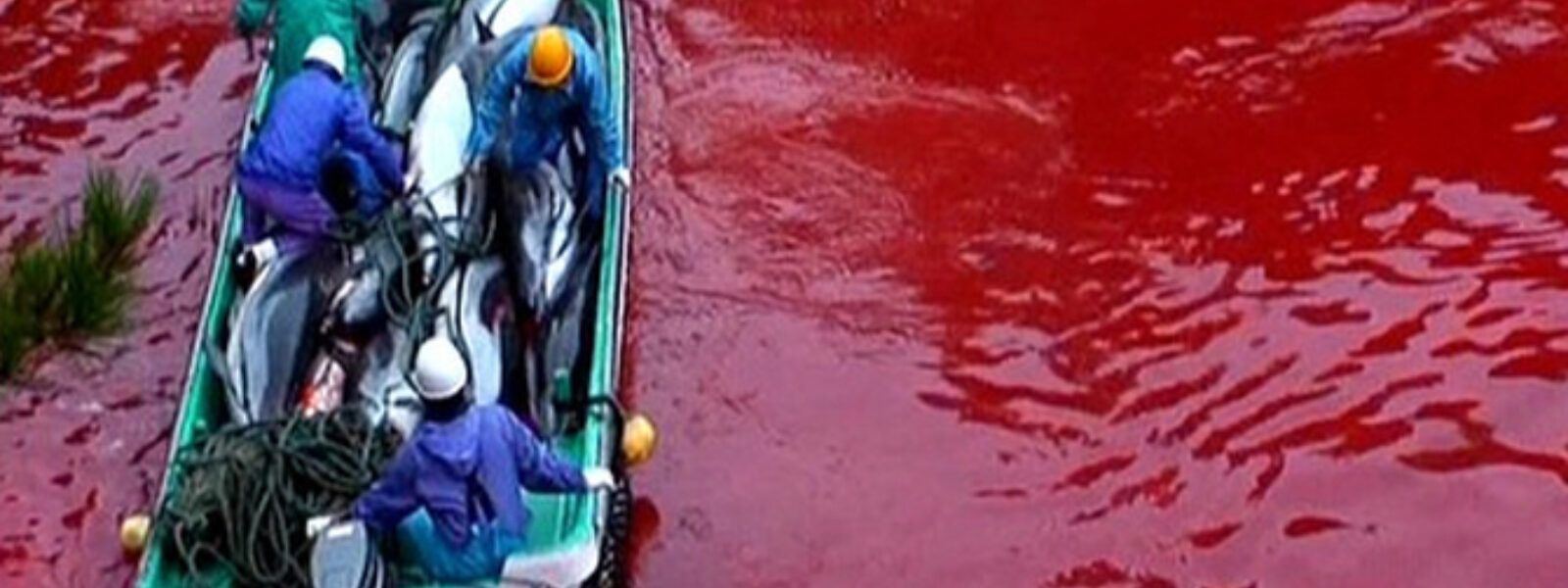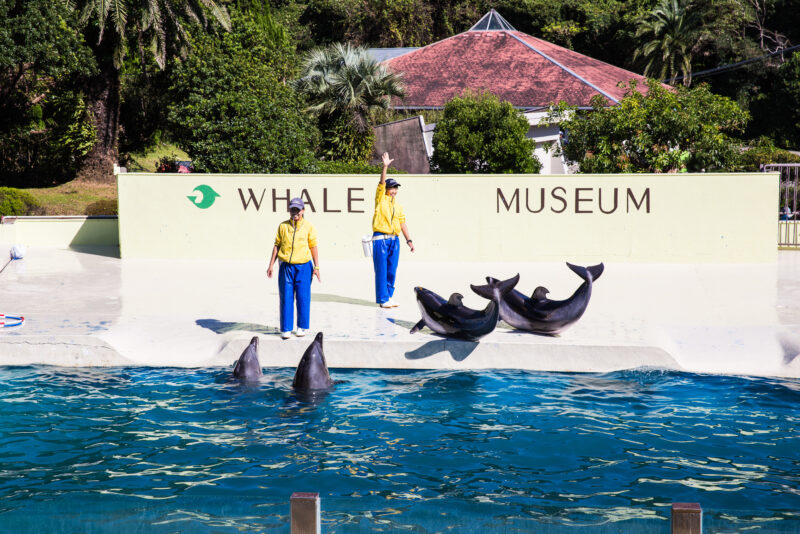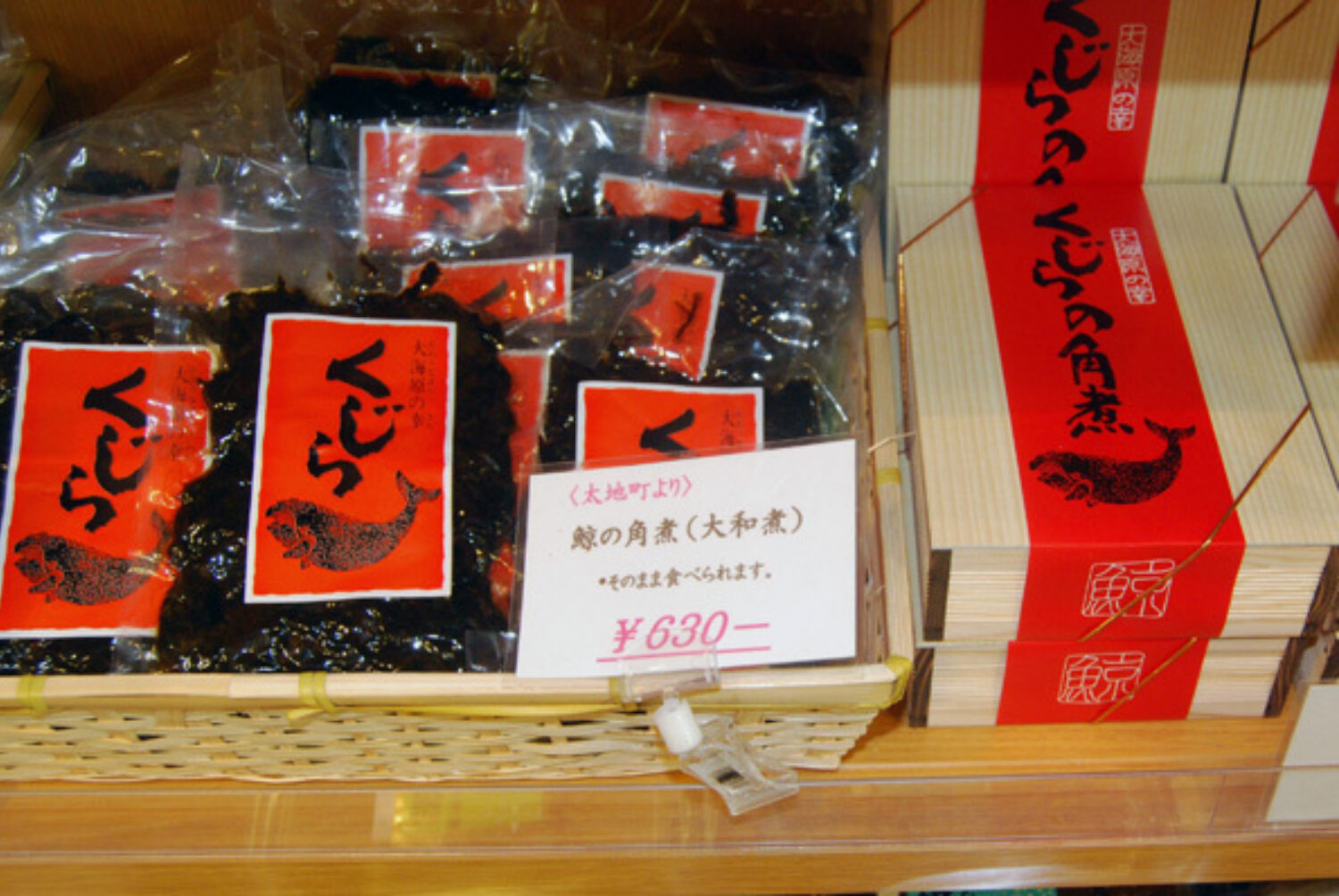
Taiji Whale Museum Is at the Heart of the Dolphin Slaughter
Photo copyright Oceanic Preservation Society

Dolphin show at Taiji Whale Museum. Credit: Shutterstock
By Mark J. Palmer, Associate Director, IMMP
The Taiji dolphin hunts began once again on Sept. 1st, where the dolphin hunters have secured a catch quota of 1,849 dolphins and small whales of nine different species.
The Japanese government and hunters claim the hunts are part of their Japanese heritage, but this is a bogus claim. While Taiji has had periodic spells of large whale hunting going back to the 12th century, few dolphins were ever killed until 1969. There is no “Japanese tradition” of hunting, eating, or catching dolphins for captivity.
In 1969, the notorious Taiji Whale Museum, which is owned by the town government of Taiji, was looking to catch several live dolphins for display in their outdoor tanks. The local dolphin hunters, reportedly trained by dolphin hunters from the town of Futo, took up the task, but added in killing of dolphins for their meat in local markets.
The big money has always been selling live dolphins to the Taiji Whale Museum and other dolphin brokers in the town. According to the Washington Post, a dolphin sold for meat will bring about $500 to the hunters, but a live trained bottlenose dolphin can be sold for $5,000 to $12,000 or much more on the world market. In addition to the Taiji Whale Museum, there are about one hundred additional aquariums and swim-with-dolphins facilities in Japan, most of which buy live dolphins from Taiji. The huge expansion of aquariums built in China is also a major market for live dolphins from Taiji.
An effort led by the International Marine Mammal Project (IMMP) of Earth Island Institute and Japan’s Elsa Nature Conservancy led to the World Association of Zoos and Aquariums (WAZA) calling for its member aquariums in Japan to stop sourcing dolphins from Taiji. While a few, including the Taiji Whale Museum, left WAZA in response, many other facilities agreed with the ban.
While many of the dolphin species are killed for their meat, the hunters especially look for bottlenose (the same species that starred in the Flipper television program), Risso’s, Pacific white-sided, and other dolphins to spend the rest of their lives in misery in concrete tanks. Most of these captives will live shorter lives in captivity than in the wild.
The hunts last for six months, from Sept. 1st to the end of February (although hunters can still harpoon pilot whales after the drive hunt season ends). The drive hunts are conducted by just twelve boats that go out to sea daily, unless conditions are too rough.
When the hunters spot a pod of dolphins, the hunters surround the pod and, banging on long pipes set in the water, drive the dolphins into the Cove (made infamous by the documentary, The Cove) to be chosen for a life in captivity or to be slaughtered in a welter of blood.
The 1,849-dolphin quota for the current season (Sept. 2021 through February 2022) is also bogus. Set by the Japanese government, the dolphin hunters rarely catch that many dolphins.
Last year, for example, about 700 dolphins were caught, of which about 150 were kept for captivity, and the rest slaughtered. The quota includes dolphins kept for captivity and those slaughtered for meat. Sometimes the hunters drive dolphins back into the ocean, and those dolphins are not counted against the quota, despite the fact that they have been traumatized and are unlikely to survive.
IMMP has made some progress in educating the people of Taiji about the dangers of eating dolphin meat due to contamination with mercury and other toxins. Our educational work, done in concert with Japanese activists, has led to fewer dolphins being killed for meat.

Whale meat for sale in Taiji, Japan. Credit: Mark J. Palmer, IMMP
But unfortunately, the captivity trade continues to be lucrative for the dolphin hunters. Our commitment to ending the dolphin killing in Japan continues.
The only bright spot in recent years is that more and more Japanese activists are turning out to protest the dolphin hunts and captivity.
Your donations are critical to end the exploitation and slaughter of dolphins and whales in Japan and elsewhere around the world. Please consider a generous donation to support IMMP’s work for the dolphins. Thank you!
